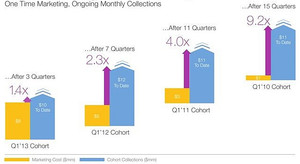The first step is to collect the data in one app, so that the weight you're measuring on the Withings connected scale and the stats on the 30-mile bike ride you tracked using MapMyRide, as well as your blood pressure, all appear in the same app and on the same interface.
Which app or website that should be is still up for grabs. A diverse group of fitness and vital-signs device makers, as well as app developers, are trying to figure it out. And the aggregation of monitoring data has turned into a spider's web of possibilities, with the functions captured on one app or hardware device able to be viewed on scores of others.
So now not only can you track Withings' weight data on Fitbit's app, but you can track Fitbit's activity data on Withings' app.
The MyFitnessPal weight-loss app shares information with Fitbit, Runtastic, BodyMedia, Jawbone and the Withings scale, among others. Fitbit shares its information with over 30 partners, including Lose It!, MapMyRun, and SleepDebt, as well as Withings and MyFitnessPal. Visit the site of your favorite fitness and health device or application, and you'll find similar partnerships.
Brian Dolan, editor of MobiHealthNews, an online publication, said the way for fitness data aggregators to differentiate themselves "is to win on the software's user experience."
¶ He explained, "I may just like the look and feel of one particular user interface."
¶ But bringing in fitness data to one location to make it easily accessible is just the beginning. Once the data is available, the next step would be to make connections between, for example, your sleep history and what you ate the night before. Then, if processing is sophisticated enough, the app would analyze the connections and make suggestions for improving your life, or even predict the possibility of a coming disease.
¶ The technology for such analysis is not quite there yet, except for some fledgling efforts. Several additional services, though, say they hope to be able to offer that kind of analysis in the coming months.
¶ "It's very important to do analytics," said Cédric Hutchings, chief executive of Withings. "We are developing services that will understand the data and provide coaching advice and services."
¶ If you want to get started using an aggregator, a few that get high marks from the fitness industry are CarePass, RunKeeper, Argus and Tictrac.
¶CarePass, developed by the health insurer Aetna, is free. It enables users to connect with more than 20 fitness data providers, including Fitbit, FitSync, iTriage, RunKeeper and Withings. Users set goals, and Aetna offers some templates, like "Fit into my favorite jeans" or "Kickstart my weight loss."
